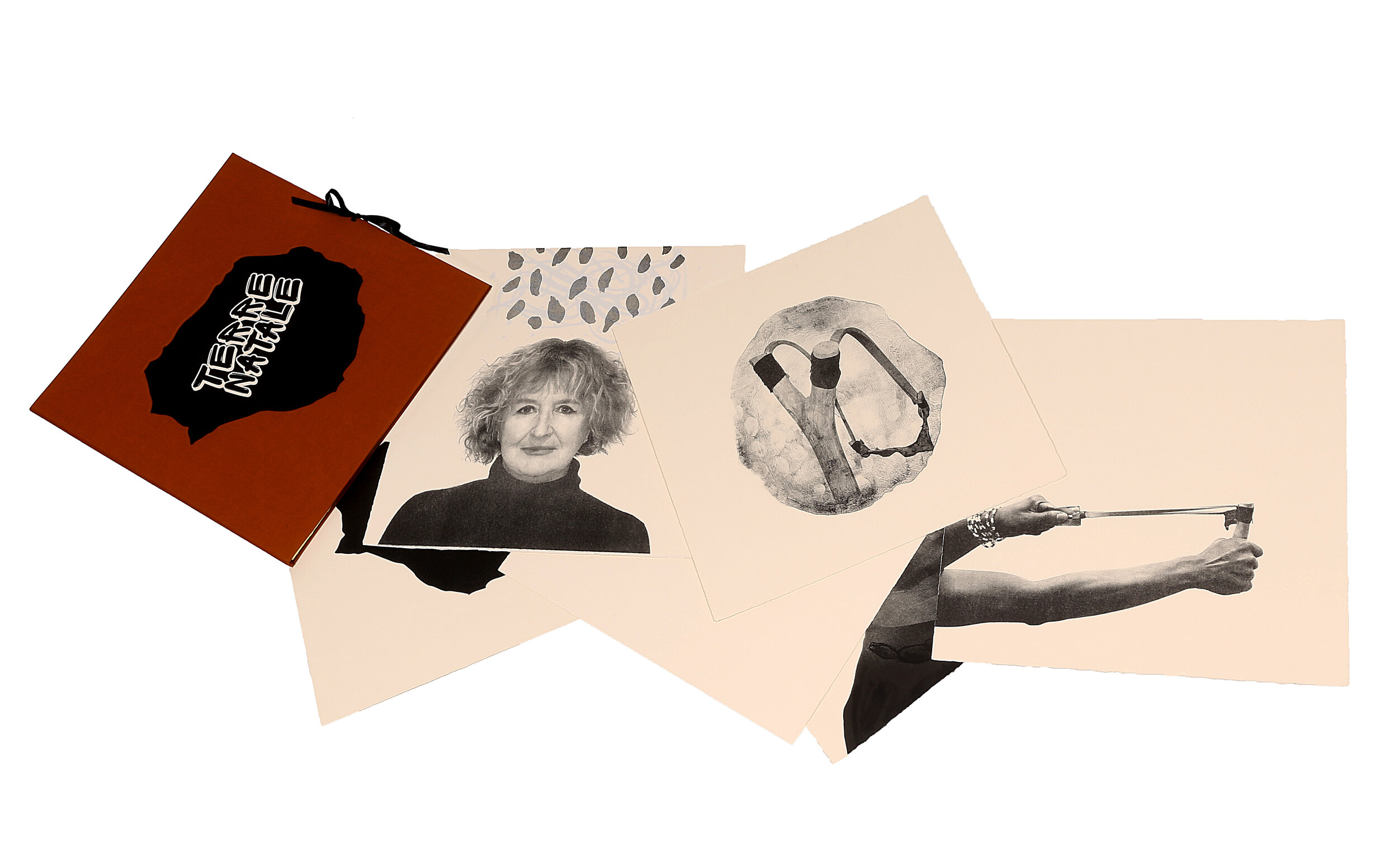Tell Me Where Your Home Is
Jo Ann Lanneville. Lithography and silkscreen on Somerset. 54 x 108 in. 2020.
We all have a different way of perceiving words; this highlights our difference. In order to share our history and our culture, we must carry out a quest for identity, both to understand our own journey and to take on what we want to pass on to others. We relativize our perspective, we redefine our world view, and as a result, we learn that there are other visions of culture that do not conform to our own. Thus, the concept of “cultural identity” is directly linked to the relationship that the individual has with their cultural environment, and the contribution of this environment defines who we are.
This artist’s book was produced with slam poet Fabrice Koffy. With his dual nationality, Canadian and Ivorian, Fabrice juggles with words. Together we combine our personal realities into one. Each person’s identity is made up of a whole host of elements: language, belonging to a religious tradition, a culture, a nationality, sometimes two. We can feel a more or less strong kinship with a country, a province, a community, a political party, a specific group, etc. If each of these elements can be found in a large number of individuals, one will never find the same combination in two different people. Fabrice and I use the same words, yet they resonate in such different ways. Together we each build up and tear down our own universe to form a single one.
Here, home becomes a self-portrait. It can be transient, or a metaphor for our identity, a refuge, a shelter. Home is an emotionally charged place, capable of conveying meanings, images and symbols. We like the idea that this space houses our thoughts, our emotions and our experiences.




